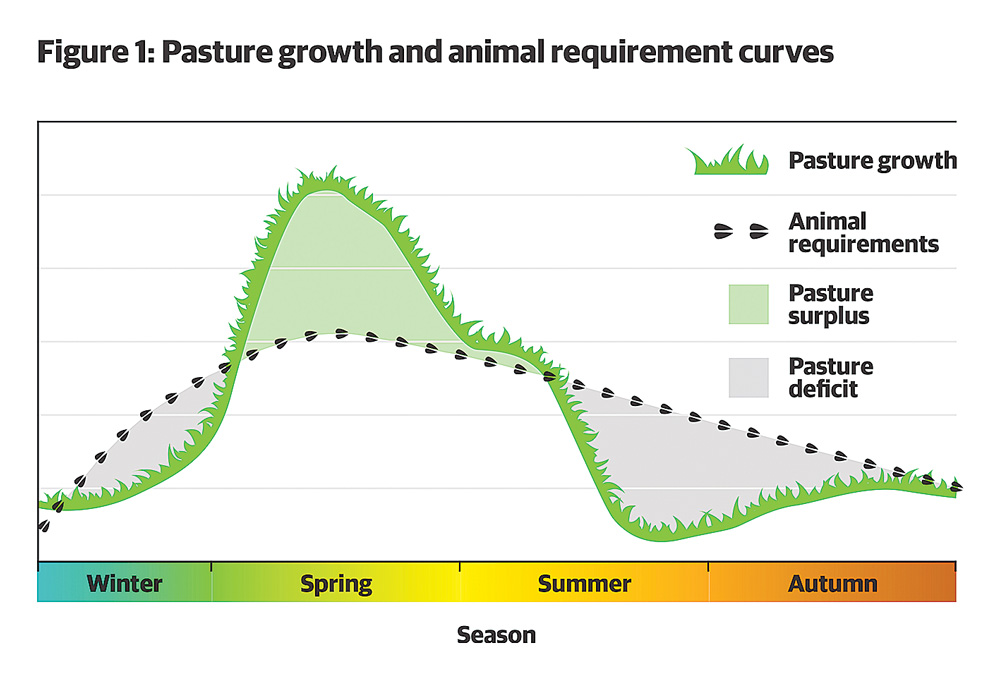Ravensdown partners with Footrot Flats to celebrate Kiwi farming heritage
Ravensdown has announced a collaboration with Kiwi icon, Footrot Flats in an effort to bring humour, heart, and connection to the forefront of the farming sector.
The New Zealand farmer can be sure that in some years his income will be high and in others it will be low -- while costs keep climbing.
Historical information suggests fertiliser is a major expense in most farm budgets but is often treated as a discretionary expense, cut during downturns in the farming economy.
While your families, the bank manager and accountant all need to be looked after, your decision to cut fertiliser spending should be well researched and justified. The temptation will be great to reduce or forgo fertiliser to help balance the books. In this case, the wise words of my wood-work teacher at high school, “measure twice and cut once”, spring to mind.
Lessons from the past
If we do not learn from history, we are doomed to repeat it. Most NZ soils are inherently deficient in nitrogen (N), phosphorus (P), sulphur (S) and to a lesser extent potassium (K), and some trace elements, e.g. molybdenum (Mo), copper (Cu) and boron (B), for growing pastures and forage crops.
The early settlers discovered that the natural fertility and residual nutrients released from ash and organic matter after they had felled and burned vegetation was soon depleted by farming introduced pastures and crops. Farmers quickly learned that lime and fertiliser greatly improved the success of their crops, but not until the 1920s was much fertiliser applied.
 Also, the NZ climate was found very favourable for clover growth, enriching the land. There were few pests and diseases to attack the clover (unfortunately not true today), so pastoral farming began to flourish based on pastures of mixed grasses and clover on which livestock could be grazed year-round.
Also, the NZ climate was found very favourable for clover growth, enriching the land. There were few pests and diseases to attack the clover (unfortunately not true today), so pastoral farming began to flourish based on pastures of mixed grasses and clover on which livestock could be grazed year-round.
Information is power
If you want to grow as much quality grass/clover pasture as possible (the cheapest animal feed you will ever get), there is no substitute for applying cost-effective fertiliser nutrients and lime to raise the plant-available levels. It is important to gather the required specialist information from people you trust to help formulate your fertiliser policy and understand what the positive or negative consequences will be. Looking on the bright side, because fertiliser represents a large input cost, it deserves time and effort to nut out exactly what your response to the current cost:return relationship for your farm will be.
The infographic attached shows the general mismatch of animal requirements relative to pasture growth (in this case with no irrigation), and shows pasture deficits in winter/early spring and summer. These deficits are greater when soil fertility is sub-optimal because wet, cold and dry soil conditions restrict the ability of soil biological and chemical processes to keep nutrients cycling in soils and plants growing.
Belt tightening options and advice to get the best from fertiliser spending:
1. Soil and herbage (when pasture is growing well) tests to identify soil fertility levels for major and trace elements. a) dairy: consider ‘whole-farm testing’ to determine areas requiring capital, maintenance and sub maintenance rates of lime and/or fertiliser nutrients. b) mixed livestock: consider dividing the farm into land management units (LMUs) based on slope, aspect and topography factors which affect production. Soil test these LMUs separately to develop a differential fertiliser and lime application plan to maximise the return from your spending.
2. Reducing applications of one nutrient can have a domino effect.
3. Identify planting areas for winter or summer forage crops early.
4. Use nitrogen fertiliser tactically to fill predicted feed gaps when climatic conditions allow.
Fertiliser nutrients are a key input to develop productive, quality feed for your livestock. Most NZ soils do not have a significant ‘natural’ supply of important mineral nutrients to develop and sustain the production of quality pastures in the long term. If you are prepared for some reduction in farm performance to survive, then reducing or ceasing fertiliser application should only be considered a very short term solution. Ideally, you should then catch up when financial conditions improve.
• Dr Ants Roberts is Ravensdown chief scientific officer.
Greenlea Premier Meats managing director Anthony (Tony) Egan says receiving the officer of the New Zealand Order of Merit (ONZM) honour has been humbling.
Waikato dairy farmer Neil Bateup, made a companion of the New Zealand Order of Merit (CNZM) in the New Year 2026 Honours list, says he’s grateful for the award.
Another Australian state has given the green light to virtual fencing, opening another market for Kiwi company Halter.
Farmer interest continues to grow as a Massey University research project to determine the benefits or otherwise of the self-shedding Wiltshire sheep is underway. The project is five years in and has two more years to go. It was done mainly in the light of low wool prices and the cost of shearing. Peter Burke recently went along to the annual field day held Massey's Riverside farm in the Wairarapa.
Applications are now open for the 2026 NZI Rural Women Business Awards, set to be held at Parliament on 23 July.
Ravensdown has announced a collaboration with Kiwi icon, Footrot Flats in an effort to bring humour, heart, and connection to the forefront of the farming sector.
President Donald Trump’s decision to impose tariffs on imports into the US is doing good things for global trade, according…
Seen a giant cheese roll rolling along Southland’s roads?